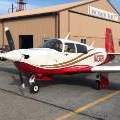Who brings the power back on climb?
Do you reduce throttle and/or prop in climb of NA Mooney?
52 members have voted
-
Members Online
- CMA-flyer
- Rotorhead
- eman1200
- Briwoo
- 201Mooniac
- Deb
- M20S Driver
- lithium366
- Parker_Woodruff
- AaronJr
- Flyler
- DXB
- MikeOH
- Andy95W
- RideOrFly
- 1980Mooney
- Mmrkulic
- jeremyc209
- varlajo
- Shiroyuki
- FlyingDude
- Bob Weber
- toto
- GoDemonDeacons
- TaildraggerPilot
- Vance Harral
- Skyland
- Justin Schmidt
- takair
- mhrivnak
- philiplane
- larryb
- hammdo
- Aerodon
- Ragsf15e
- jjvanl
- AgFlyer


Recommended Posts
Join the conversation
You can post now and register later. If you have an account, sign in now to post with your account.